
# 1128 - 1959 4¢ Arctic Explorations
Patents for submarines and submersible boats were submitted in the 1700s, and in 1800, Robert Fulton designed a human-powered submarine, also called the Nautilus. Improvements and advances in technology followed and by the 1900s, most submarines were diesel-powered. Submarines were used widely in both World Wars, but their dependence on diesel fuel limited the amount of time they could be under water.
In July 1951, Congress approved the creation of a nuclear-powered submarine for the U.S. Navy. Hyman G. Rickover, known as “Father of the Nuclear Navy”, oversaw the Nautilus’ planning and construction.
On June 14, 1952. President Harry S. Truman visited the Connecticut boat yard to lay the keel, signaling the start of construction. Building the Nautilus took about a year and a half. Once it was completed, the Navy held a special launch ceremony on January 21, 1954. First Lady Mamie Eisenhower broke the customary bottle of champagne on the ship’s bow. She was the first president’s wife to ever christen a U.S. Navy submarine.
The Nautilus was commissioned into the Navy that September and the following January entered service with its commander stating, “Underway on nuclear power.” As the world’s first nuclear-powered submarine, the Nautilus quickly broke all existing under water speed and distance records.
In April 1958, the Nautilus began “Operation Sunshine,” aimed at becoming the first submerged ship to travel under the North Pole. On the first attempt, the sub was unable to find enough space between the bottom of the ice and the ocean floor. But the second try was successful.
On August 3, 1958, the Nautilus reached the pole. The crew encountered more difficulties – navigation became difficult once the submarine approached the 85-degree longitude mark (the North Pole is at 90 degrees). Magnetic compasses and other instruments became inaccurate. But with the use of specially designed equipment, they were able to complete the mission. To reward the success of the journey, the entire crew was awarded the Presidential Unit Citation – the first one presented during peacetime.
The Nautilus was decommissioned in 1980 and designated a National Historic Landmark two years later. Today it lives on a submarine museum in Groton, Connecticut.
U.S. Launches First Nuclear Submarine
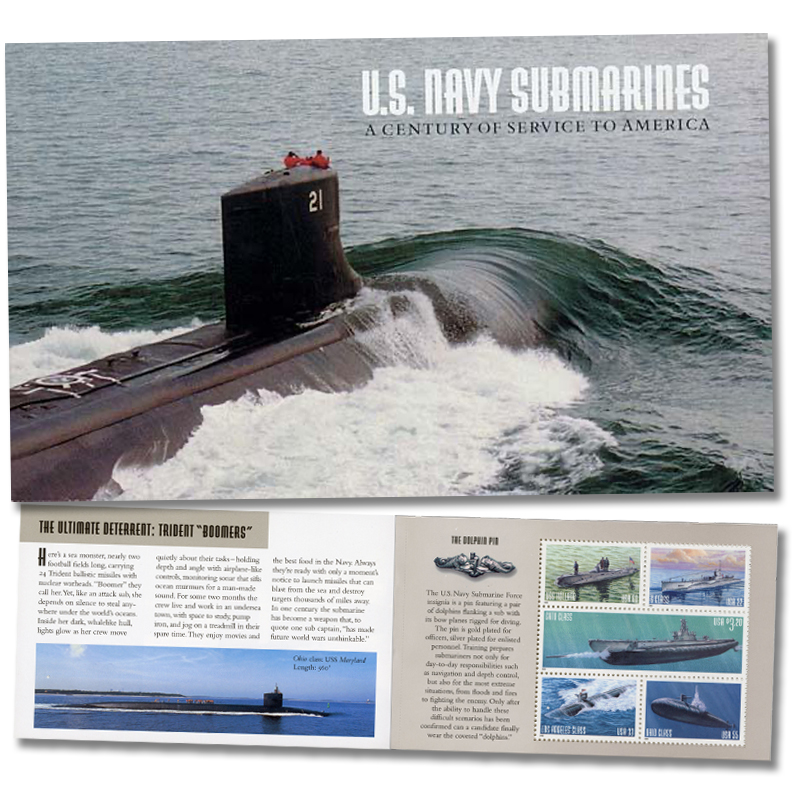
On January 21, 1954, the USS Nautilus, the world’s first operational nuclear-powered submarine, was launched.
Accounts of boats submerging in the water date back to the 1560s, though the first verifiable vessel was designed and built in 1620.
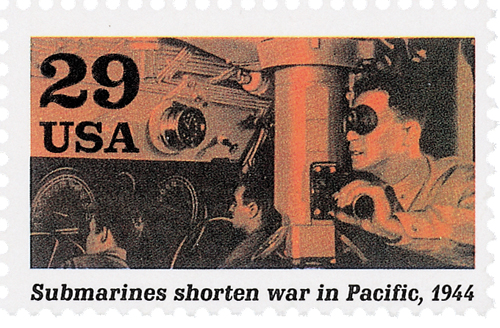
Patents for submarines and submersible boats were submitted in the 1700s, and in 1800, Robert Fulton designed a human-powered submarine, also called the Nautilus. Improvements and advances in technology followed and by the 1900s, most submarines were diesel-powered. Submarines were used widely in both World Wars, but their dependence on diesel fuel limited the amount of time they could be under water.
In July 1951, Congress approved the creation of a nuclear-powered submarine for the US Navy. Hyman G. Rickover, known as “Father of the Nuclear Navy”, oversaw the Nautilus’ planning and construction.
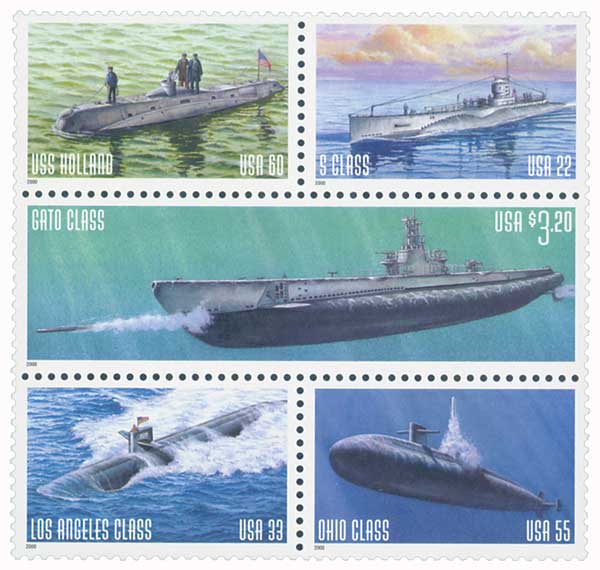
On June 14, 1952. President Harry S. Truman visited the Connecticut boatyard to lay the keel, signaling the start of construction. Building the Nautilus took about a year and a half. Once it was completed, the Navy held a special launch ceremony on January 21, 1954. First Lady Mamie Eisenhower broke the customary bottle of champagne on the ship’s bow. She was the first president’s wife to ever christen a US Navy submarine.
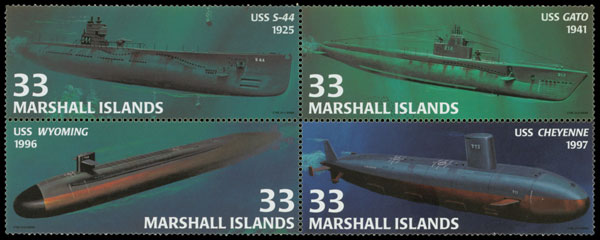
The Nautilus was commissioned into the Navy that September and the following January entered service with its commander stating, “Underway on nuclear power.” As the world’s first nuclear-powered submarine, the Nautilus quickly broke all existing underwater speed and distance records.
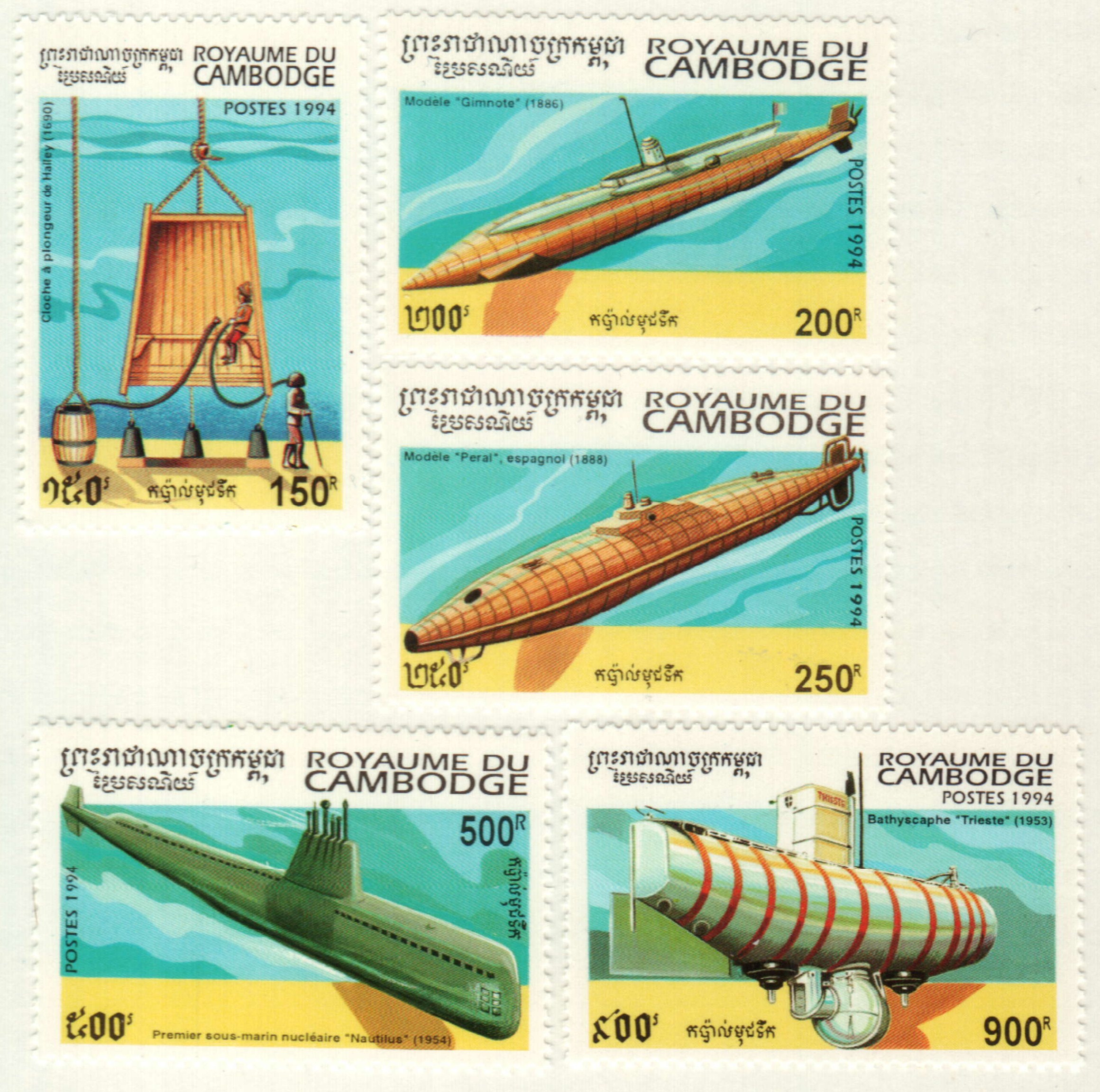
In April 1958, the Nautilus began “Operation Sunshine,” aimed at becoming the first submerged ship to travel under the North Pole. On the first attempt, the sub was unable to find enough space between the bottom of the ice and the ocean floor. But the second try was successful.
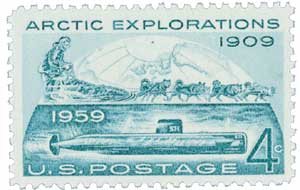
On August 3, 1958, the Nautilus reached the pole. The crew encountered more difficulties – navigation became difficult once the submarine approached the 85-degree longitude mark (the North Pole is at 90 degrees). Magnetic compasses and other instruments became inaccurate. But with the use of specially designed equipment, they were able to complete the mission. To reward the success of the journey, the entire crew was awarded the Presidential Unit Citation – the first one presented during peacetime.
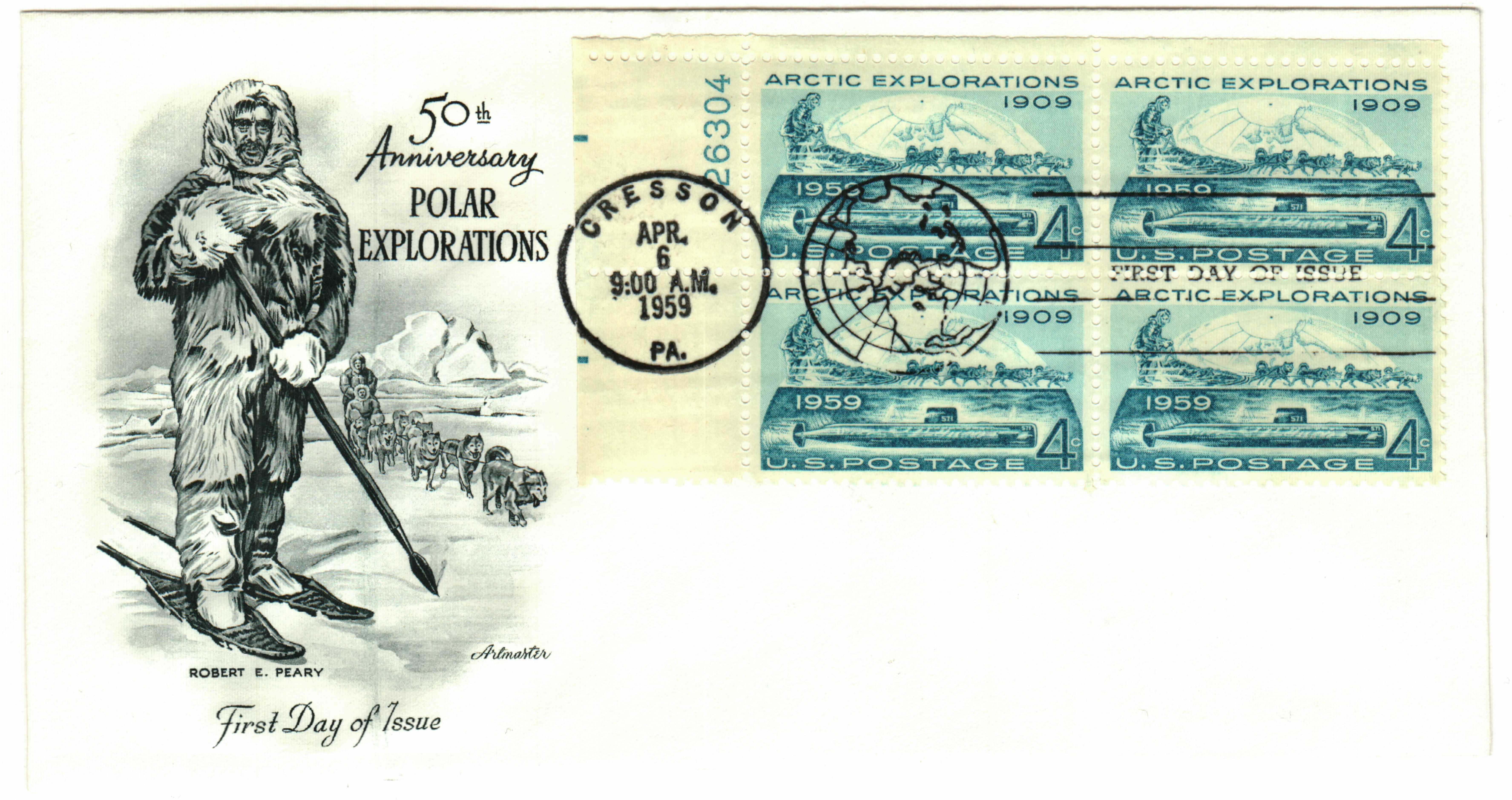
The Nautilus was decommissioned in 1980 and designated a National Historic Landmark two years later. Today it lives on a submarine museum in Groton, Connecticut.
Click here to see a video of the Nautilus’ launch and here for photos and more about the sub.
Patents for submarines and submersible boats were submitted in the 1700s, and in 1800, Robert Fulton designed a human-powered submarine, also called the Nautilus. Improvements and advances in technology followed and by the 1900s, most submarines were diesel-powered. Submarines were used widely in both World Wars, but their dependence on diesel fuel limited the amount of time they could be under water.
In July 1951, Congress approved the creation of a nuclear-powered submarine for the U.S. Navy. Hyman G. Rickover, known as “Father of the Nuclear Navy”, oversaw the Nautilus’ planning and construction.
On June 14, 1952. President Harry S. Truman visited the Connecticut boat yard to lay the keel, signaling the start of construction. Building the Nautilus took about a year and a half. Once it was completed, the Navy held a special launch ceremony on January 21, 1954. First Lady Mamie Eisenhower broke the customary bottle of champagne on the ship’s bow. She was the first president’s wife to ever christen a U.S. Navy submarine.
The Nautilus was commissioned into the Navy that September and the following January entered service with its commander stating, “Underway on nuclear power.” As the world’s first nuclear-powered submarine, the Nautilus quickly broke all existing under water speed and distance records.
In April 1958, the Nautilus began “Operation Sunshine,” aimed at becoming the first submerged ship to travel under the North Pole. On the first attempt, the sub was unable to find enough space between the bottom of the ice and the ocean floor. But the second try was successful.
On August 3, 1958, the Nautilus reached the pole. The crew encountered more difficulties – navigation became difficult once the submarine approached the 85-degree longitude mark (the North Pole is at 90 degrees). Magnetic compasses and other instruments became inaccurate. But with the use of specially designed equipment, they were able to complete the mission. To reward the success of the journey, the entire crew was awarded the Presidential Unit Citation – the first one presented during peacetime.
The Nautilus was decommissioned in 1980 and designated a National Historic Landmark two years later. Today it lives on a submarine museum in Groton, Connecticut.
U.S. Launches First Nuclear Submarine

On January 21, 1954, the USS Nautilus, the world’s first operational nuclear-powered submarine, was launched.
Accounts of boats submerging in the water date back to the 1560s, though the first verifiable vessel was designed and built in 1620.

Patents for submarines and submersible boats were submitted in the 1700s, and in 1800, Robert Fulton designed a human-powered submarine, also called the Nautilus. Improvements and advances in technology followed and by the 1900s, most submarines were diesel-powered. Submarines were used widely in both World Wars, but their dependence on diesel fuel limited the amount of time they could be under water.
In July 1951, Congress approved the creation of a nuclear-powered submarine for the US Navy. Hyman G. Rickover, known as “Father of the Nuclear Navy”, oversaw the Nautilus’ planning and construction.

On June 14, 1952. President Harry S. Truman visited the Connecticut boatyard to lay the keel, signaling the start of construction. Building the Nautilus took about a year and a half. Once it was completed, the Navy held a special launch ceremony on January 21, 1954. First Lady Mamie Eisenhower broke the customary bottle of champagne on the ship’s bow. She was the first president’s wife to ever christen a US Navy submarine.

The Nautilus was commissioned into the Navy that September and the following January entered service with its commander stating, “Underway on nuclear power.” As the world’s first nuclear-powered submarine, the Nautilus quickly broke all existing underwater speed and distance records.

In April 1958, the Nautilus began “Operation Sunshine,” aimed at becoming the first submerged ship to travel under the North Pole. On the first attempt, the sub was unable to find enough space between the bottom of the ice and the ocean floor. But the second try was successful.

On August 3, 1958, the Nautilus reached the pole. The crew encountered more difficulties – navigation became difficult once the submarine approached the 85-degree longitude mark (the North Pole is at 90 degrees). Magnetic compasses and other instruments became inaccurate. But with the use of specially designed equipment, they were able to complete the mission. To reward the success of the journey, the entire crew was awarded the Presidential Unit Citation – the first one presented during peacetime.

The Nautilus was decommissioned in 1980 and designated a National Historic Landmark two years later. Today it lives on a submarine museum in Groton, Connecticut.
Click here to see a video of the Nautilus’ launch and here for photos and more about the sub.








